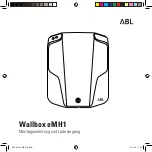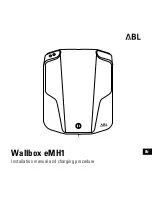
103
n
Index
Data
Technology
Repairs
Car care
Controls
Overview
Brakes: do not drive with your foot
resting on the brake pedal. Even
light but consistent pedal pressure can
lead to high temperatures, brake wear
and possibly even brake failure.
Aquaplaning:
When driving on wet or slushy roads,
reduce vehicle speed. If you do not, a
wedge of water may form between the
tires and the road surface. This
phenomenon is referred to as aqua-
planing, or hydroplaning, and can lead
to partial or complete loss of traction,
vehicle control and braking effective-
ness.
Driving through water:
Do not drive through water on the road
if it is deeper than 1 foot (30 cm), and
then only at walking speed. Otherwise,
the vehicle's engine, the electrical
systems and the transmission may be
damaged.
Rear window shelf:
Never use it to store heavy or hard
objects, otherwise, occupants could be
injured if the vehicle is braked hard.
<
The catalytic converter reduces harmful
exhaust emissions.
It is designed for use with unleaded fuel
only. Even minute quantities of lead
would be enough to permanently
damage both the catalytic converter
and the system oxygen sensor.
To ensure efficient, trouble-free engine
operation and avoid potential damage:
>
Be sure to comply with the scheduled
maintenance requirements
>
Fill the fuel tank well before it is
empty
>
Tow-start only when the engine is
cold. If you attempt to tow-start with
a warm engine, unburned residual
fuel in the catalytic converter could
ignite and cause damage. It is better
to start the vehicle with an outside
starting aid
>
Avoid other situations in which the
fuel is not burned or burns incom-
pletely such as frequent or extended
starter engagement or repeated start
attempts in which the engine does
not start. Stopping and restarting an
engine which is running properly
does not present a problem. Never
allow the engine to run with any of
the spark plug cables disconnected.
Be sure to observe the instruc-
tions above to prevent unburned
fuel from reaching the catalytic
converter. Otherwise there is danger of
overheating and damage to the cata-
lytic converter.
Extreme temperatures occur at the
catalytic converter on this and every
catalyst-equipped vehicle. Heat shields
are installed adjacent to some sections
of the exhaust system. Never remove
these shields; do not apply under-
coating to their surfaces. When driving,
standing at idle or when parking, take
precautions to avoid contact between
the hot exhaust system and easily flam-
mable materials (grass, hay or leaves,
for example). Such contact could lead
to a fire, resulting in personal injury and
property damage.
<
Driving notes
Catalytic converter
Summary of Contents for M3 2001
Page 1: ...e Vehicle e guide...
Page 2: ...M3 BMW recommends Castrol...
Page 5: ...5n Status at time of printing...
Page 8: ......
Page 13: ...13n...
Page 14: ......
Page 16: ......
Page 17: ...17n Index Data Technology Repairs Car care Controls Overview...
Page 18: ......
Page 53: ...53n Index Data Technology Repairs Car care Controls Overview...
Page 71: ...71n Index Data Technol Repairs Car care Controls Overview...
Page 80: ......
Page 83: ...83n Index Data Technology Repairs Car care Controls Overview...
Page 84: ......
Page 85: ...85n Index Data Technology Repairs Car care Controls Overview...
Page 94: ......
Page 99: ...99n Index Data Technology Repairs Car care Controls Overview...
Page 100: ......
Page 117: ...117n Index Data Technology Repairs Car care Controls Overview...
Page 119: ...119n Index Data Technology Repairs Car care Controls Overview...
Page 120: ......
Page 121: ...121n Index Data Technology Repairs Car care Controls Overview...
Page 136: ......
Page 153: ...Index Data Technology Repairs Car care Controls Overview 153n...
Page 156: ......
Page 164: ......
Page 171: ...171n Index Data Technology Repairs Car care Controls Overview...
Page 172: ......
Page 180: ......
Page 182: ...The Ultimate Driving Machine 01 41 0 155 433 ue ble...
Page 183: ......
















































